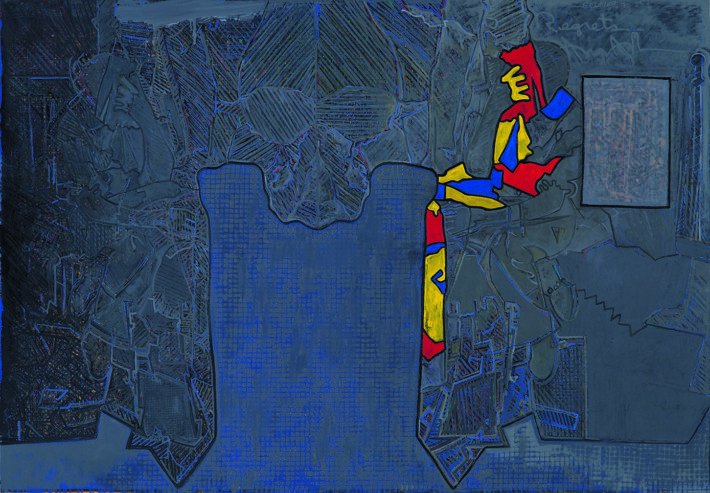22 November 2017
What on earth might induce an artist to work for sixty years with a language, that of painting, which smacked increasingly of tradition, of the past—especially in America, especially in the 1950s? An artist whose friends included the conceptual composer John Cage and the avant-garde choreographer Merce Cunningham and whose mentor was the Marcel Duchamp who had invented the readymade, bringing reality into the space of art and undermining the equation of art and illusion. Jasper Johns answered that question in 2006, and that precious response is now the title of an anthological exhibition with over 150 of his works in which the canvas is only the basis for a profound and never satisfied search for “something resembling truth.” The show—currently in London, it will move to Los Angeles later—is organized thematically, but opens and closes with a nod to chronology, highlighting the allusion to childhood in Johns’s recent production, where the reflection on mortality passes through memory and the aesthetic, literary and philosophical reverberations of a life accumulated on the surface of the canvas. In the first rooms we find the flags, targets, numbers and words that made the artist famous. Each symbol, reconstructed in a variety of media, from collage to encaustic painting, is recognizable but decontextualized; it exists in an abstract space underpinned with references to reality, often mediated by brushes, neon lights, straightedges and traces of various kinds: all evidence of a short-circuit between process and work of art. Over the years, Johns has also experimented in the realm of abstraction and tried his hand at self-portraits, at representations of the four seasons and at themes of vanitas and the conflict between Eros and Thanatos in Tantric symbology. In his hands, the canvas is three-dimensional, tactile, sensual, allusive and often hermetic; it is the base and the breaking point, the beginning and the end.
Jasper Johns. Something Resembling Truth
Royal Academy of Arts, London
September 23 – December 10, 2017

Photo: David Parry.

Photo: David Parry.

Photo: David Parry.

Photo: David Parry.

Photo: David Parry.

Jasper Johns, Between the Clock and the Bed, 1981. Collection of the artist. © Jasper Johns / VAGA, New York / DACS, London 2017. Photo: Jamie Stukenberg © The Wildenstein Plattner Institute, 2017.

Jasper Johns, Untitled, 1992–4. The Eli and Edythe L. Broad Collection. © Jasper Johns / VAGA, New York / DACS, London 2017.

Jasper Johns, Flag, 1958. Private collection. © Jasper Johns / VAGA, New York / DACS, London 2017. Photo: Jamie Stukenberg. © The Wildenstein Plattner Institute, 2017.

Jasper Johns, Regrets, 2013. Collection of Marguerite Steed Hoffman. © Jasper Johns / VAGA, New York / DACS, London 2017. Photo: © Jerry L. Thompson.

Jasper Johns, Target, 1961. The Art Institute of Chicago. © Jasper Johns / VAGA, New York / DACS, London. Photo: © 2017. The Art Institute of Chicago / Art Resource, NY / Scala, Florence.

Jasper Johns, Painting with Two Balls, 1960. Collection of the artist. © Jasper Johns / VAGA, New York / DACS, London 2017. Photo: Jamie Stukenberg. © The Wildenstein Plattner Institute, 2017.

Jasper Johns, 0 Through 9, 1960. Collection of the artist. © Jasper Johns / VAGA, New York / DACS, London 2017. Photo: Jamie Stukenberg / Professional Graphics Inc., Rockford, IL.

Jasper Johns, Summer, 1985. Museum of Modern Art, New York. © Jasper Johns / VAGA, New York / DACS, London 2017. © 2017. Digital image, The Museum of Modern Art, New York / Scala, Florence.

Jasper Johns, Fool’s House, 1961–62. Private collection © Jasper Johns / VAGA, New York / DACS, London 2017.